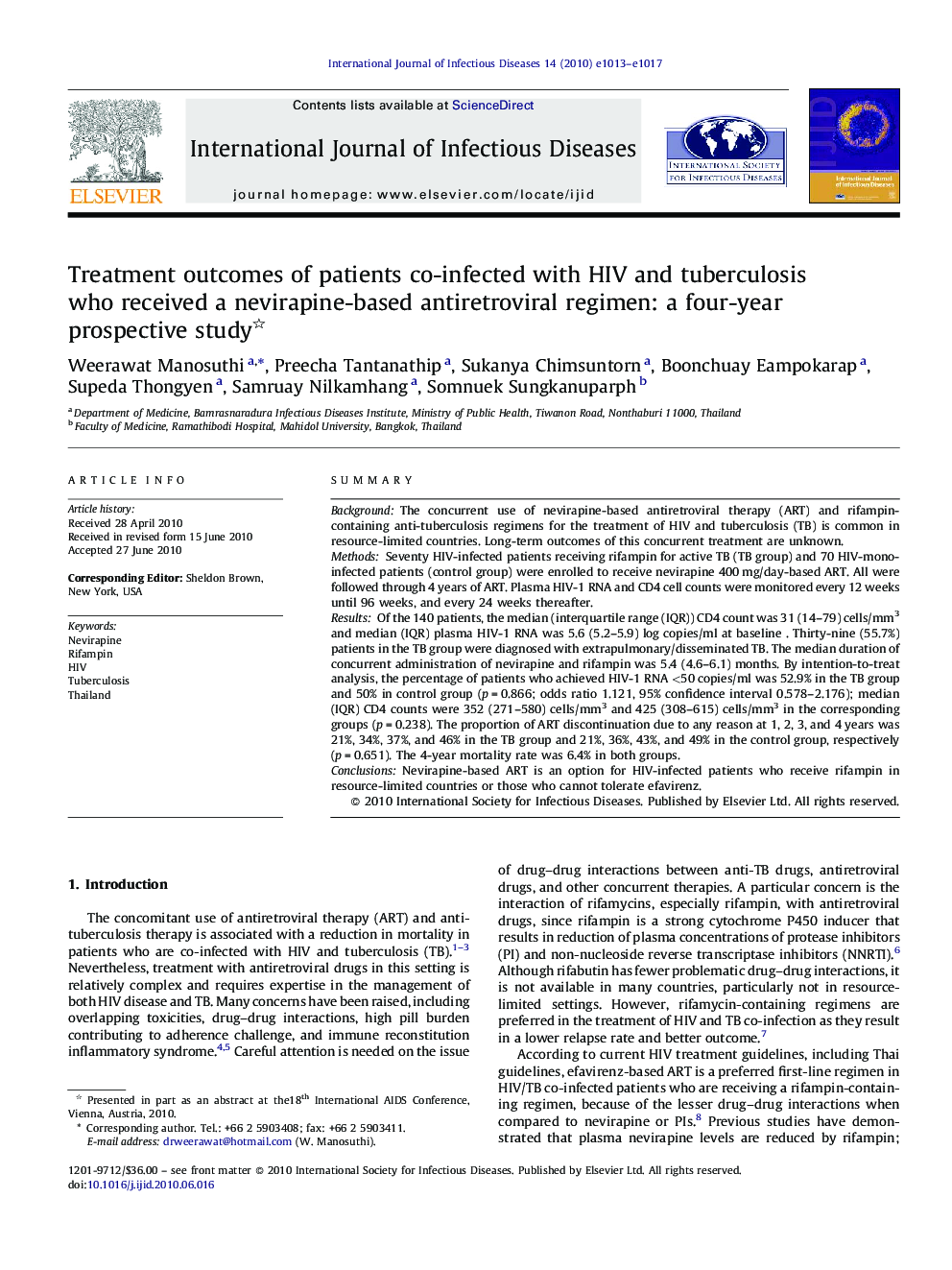| Article ID | Journal | Published Year | Pages | File Type |
|---|---|---|---|---|
| 3363826 | International Journal of Infectious Diseases | 2010 | 5 Pages |
SummaryBackgroundThe concurrent use of nevirapine-based antiretroviral therapy (ART) and rifampin-containing anti-tuberculosis regimens for the treatment of HIV and tuberculosis (TB) is common in resource-limited countries. Long-term outcomes of this concurrent treatment are unknown.MethodsSeventy HIV-infected patients receiving rifampin for active TB (TB group) and 70 HIV-mono-infected patients (control group) were enrolled to receive nevirapine 400 mg/day-based ART. All were followed through 4 years of ART. Plasma HIV-1 RNA and CD4 cell counts were monitored every 12 weeks until 96 weeks, and every 24 weeks thereafter.ResultsOf the 140 patients, the median (interquartile range (IQR)) CD4 count was 31 (14–79) cells/mm3 and median (IQR) plasma HIV-1 RNA was 5.6 (5.2–5.9) log copies/ml at baseline . Thirty-nine (55.7%) patients in the TB group were diagnosed with extrapulmonary/disseminated TB. The median duration of concurrent administration of nevirapine and rifampin was 5.4 (4.6–6.1) months. By intention-to-treat analysis, the percentage of patients who achieved HIV-1 RNA <50 copies/ml was 52.9% in the TB group and 50% in control group (p = 0.866; odds ratio 1.121, 95% confidence interval 0.578–2.176); median (IQR) CD4 counts were 352 (271–580) cells/mm3 and 425 (308–615) cells/mm3 in the corresponding groups (p = 0.238). The proportion of ART discontinuation due to any reason at 1, 2, 3, and 4 years was 21%, 34%, 37%, and 46% in the TB group and 21%, 36%, 43%, and 49% in the control group, respectively (p = 0.651). The 4-year mortality rate was 6.4% in both groups.ConclusionsNevirapine-based ART is an option for HIV-infected patients who receive rifampin in resource-limited countries or those who cannot tolerate efavirenz.
